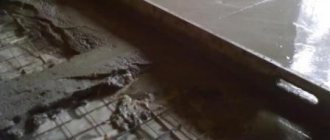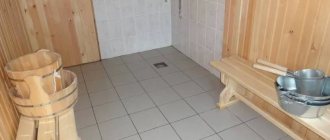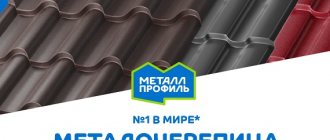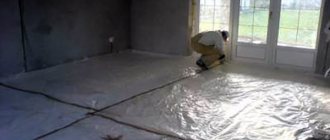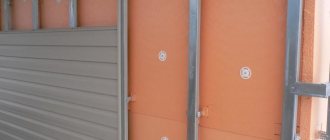When organizing an individual water supply for a house with water taken from a well or borehole, it is necessary to take measures for the normal operation of the water supply system in winter to prevent freezing of the water in the pipe. Therefore, the question of how to insulate a water pipe in the ground with your own hands is relevant for all users of their own water supply line. To insulate a pressure water pipeline underground, it is necessary to calculate and select the most optimal insulation option and install it correctly in compliance with the technology.
Rice. 1 Map of soil freezing levels
Why do you need to insulate pipes?
If you look at the map of freezing depths, you can see that in the northern regions it reaches 2.4 meters - naturally, digging holes of such depth on your site is too expensive. In addition, this is irrational from the point of view of supplying water from a well or well to the house; problems will arise with the well - the pressure pipe must come out of the head and in order to install pumping equipment it will be necessary to dig out and equip a caisson or a caisson pit of very great depth. Using insulation for water pipes in the ground, you can lay a water main at a shallow depth, saving money and increasing the ease of use and maintenance of pumping equipment.
Another advantage of insulating water pipes in the ground is saving resources. The water entering the house is heated for domestic needs and heating - it is clear that heating colder water will require more electricity. If the pipes are insulated from cold soil, then the costs of insulation and work will not only be fully recouped over time, but will also bring significant savings.
An effective way to combat freezing of water pipelines is to use an electric cable, which is glued to the line along its entire length and lowered into the well. Placing the cable and pipeline as additional insulation in a warm shell will significantly save energy when heating the water main.
Rice. 2 Table of heat losses depending on the thickness of the insulator
Basalt insulation and foam plastic
Good insulation is made from basalt using the melting method. Cylinders of different diameters are produced from it, which are used as insulation.
In addition to ease of installation, basalt cylinders fit perfectly into the pipeline. The price of this material is higher than the price of glass wool, but it also requires protection from moisture, which is foil insulation or glassine.
Insulating the water supply on the street is an important point, for which polystyrene foam is most often used in practice. To insulate any pipeline, a shell of suitable diameter is made.
They come with or without coating. The foam shell can be used several times, which saves money, while it has the most suitable operational and technical characteristics as insulation.
The main methods of insulating an underground water main
There are several methods of insulating water pipes, which have different principles of operation, some of them are used only in the industrial sector.
Use of insulation materials
The use of building materials with a low thermal conductivity coefficient is one of the simplest methods, which is the most common when insulating pipes in the ground and on the surface. Materials may be placed around the pipes or applied to their surface in the form of paint, resin or foam. The technology is widely used in the industrial sector, for insulating water supply and sewerage systems in private homes.
Heating cable
An electric heating cable is placed inside or close to the pipe and heats it, preventing the water from freezing. The cables themselves are sold in specialized stores, their power ranges from 10 to 20 watts per linear meter; the use of a cable system allows you to bury a water supply system at a distance of no more than 50 cm from the surface of the earth.
The advantages of using a cable are the ability to be placed directly in the water, this allows it to be mounted inside a pipeline and lowered into a well to a considerable depth. The use of an electric cable inside the pipes simultaneously with the installation of external insulation is the most effective and economical solution for protecting the water main from freezing during individual water supply.
Rice. 3 Thermal conductivity of various materials
Air insulation
A more expensive method that is used in industrial and public utilities. When it is used underground, the pipeline is insulated from above using insulation, and warm air is supplied from below, warming the water supply.
A method often used is when the pipeline is placed in a large diameter pipe, inside which warm air passes. This method is usually used to insulate a water main running along the surface; it can also be used in individual areas if the pipeline is buried in the ground - the air gap will prevent the water from freezing without heating.
Pressure insulation
Using pressure, water supply systems are protected from freezing in underground main systems or in unheated rooms; a special receiver is used to increase the pressure. The pressure in the system with this method exceeds 5 atmospheres, while standard pumping equipment for organizing individual water supply is designed to operate with a pressure of no more than 3 bar.
Rice. 4 Electric heating cable - appearance
This technique was developed for use in industrial and municipal engineering communication systems; in everyday life, the use of high pressure is effective if there is a high-quality pipeline and devices designed to work with high pressure. To implement the method, it is necessary to pump water into the main line using an electric pump under a pressure of more than 5 bar. and turn off the pumping equipment - theoretically, water at this pressure should not freeze for a very long time in the absence of the owners.
Rules for the construction of underground water supply
Basic documents used when developing an underground water supply scheme in a country house or in a residential building:
- SP 31.13330.2012;
- SP 22.13330.2011;
- SP 25.13330.2012.
Basic provisions of regulatory documents
Basic provisions of regulatory documentation:
- When laying pipes, it is necessary to take into account the depth of soil freezing; SP 31.13330.2012 standards recommend laying the pipe in the ground 500 mm lower than the point with a temperature of 0°C. The depth is determined experimentally or according to collected statistics; a calculated determination of the parameter is allowed.
- When calculating the freezing depth, the requirements of SP 22.13330.2011 are taken into account, which stipulate correction factors for various types of soil.
- In mountainous areas or when an estimated freezing depth of more than 2.5 m is obtained, additional calculations are carried out in accordance with Appendix G to the standards SP 25.13330.2012.
- In areas with an average annual stable positive temperature, it is allowed to introduce a correction factor of 1.1, which reduces the depth of laying highways.
Low temperature protection
When building a house, it is impossible to lay the entire water supply line below the freezing point. For example, in the middle zone the soil cools to negative temperatures at a depth of 1300 mm, and in the northern regions - at around 2250-2500 mm.
To reduce the depth of the trench and reduce the cost of work, thermal insulation of pipes is introduced or heating devices from an external heat source are installed. The choice of thermal insulation for water supply pipes or heating method depends on the characteristics of the pumped liquid and climatic conditions.
Basic requirements for materials
The material that can be used when carrying out thermal insulation work must meet the following requirements:
- Have low thermal conductivity. This is the main requirement; choosing a product with a low coefficient will effectively protect the pipeline from freezing and save money.
- It is good to tolerate the effects of chemical and organic substances contained in the soil, and have biological resistance to various types of microorganisms and bacteria.
- Have a long service life without losing its physical characteristics.
- The insulation should not be afraid of exposure to moisture, absorb and allow water to pass through, its physical parameters should not change in the aquatic environment.
- Exposure to high and low temperatures, as well as their changes, should not destroy the insulator and affect its physical properties.
Requirements that insulation must meet
Since this material is intended to protect water pipes from frost, it must have a number of characteristics.
Before insulating the water supply system on the street, you should know that, despite their diversity, each of them must meet the following requirements:
- minimal thermal conductivity to retain the maximum amount of heat;
- water-repellent properties that will provide airtight protection;
- antifungal properties that prevent putrefactive processes from developing;
- resistance to various aggressive environments that can affect a certain area of the structure;
- resistance to high temperatures and fire;
- long service life.
Before insulating a water supply system above the ground, think carefully about choosing insulation so that later there will be no difficulties during the installation process.
If the work will be carried out by a non-professional craftsman, then it is desirable that the insulation process does not require a large number of tools.
Insulating materials for pipes
Modern industry has mastered the production of ready-made water pipes in an insulating shell, which is covered with a layer of waterproofing on top. When using piped water supply at home, in most cases you will have to do the insulation yourself, deciding how best to insulate the water pipe underground by choosing one of the methods below.
Sprayed insulation (PPU)
A method rarely used in everyday life consists of thermal insulation of a pipeline by spraying polyurethane onto its surface. The advantages of the method are that it provides 100% tightness and allows you to adjust the thickness of the fill; the disadvantages include the very high cost of the material and the work performed.
In addition to polyurethane, the insulating shell is made of liquid foam, the cost of which is lower than polyurethane spraying.
Rice. 5 Thermal insulation by spraying polyurethane and foam
Thermal insulation paint
One of the high-tech products, it is a thick acrylic-based mass containing the smallest particles of perlite, fiberglass, foam glass and glass-ceramic microgranules with a vacuum and a thermal conductivity of 0.00083 W/(m*K), providing basic thermal insulation.
Rice. 6 Thermal insulation of water supply pipes with paint
Typically, paint is applied to the surface in a layer of up to 4 mm, replacing insulation with a thickness of several tens of millimeters. Thermal insulation paint is supplied in special containers, has the form of a white or gray paste, which can be tinted; to thermally insulate sections or the entire pipeline, it is applied with a brush or by spraying. The advantages of using thermal insulation paint are:
- High degree of adhesiveness, allowing paint to be applied to steel and plastic surfaces with good adhesion.
- Possibility of effective operation in a wide temperature range from -70 to +260 C.
- Insulating a water pipe in the ground with paint reliably protects it from corrosion - this is a big advantage when using steel water pipes on a site.
- The material has a long service life, reaching up to 15 years; the possibility of painting it in various colors allows you to use paint on open pipes indoors, choosing a color that does not disturb the interior.
- According to the manufacturer, heat-insulating paint has the lowest thermal conductivity coefficient of all insulation materials, equal to 0.0012 W/(m*K), while air has a thermal conductivity of 0.023 - 0.026 W/(m*K). Some experts accuse the manufacturer of deceiving the consumer and indicate other figures in their calculations - 0.0698 W/(m*K).
The main disadvantages of paints include their high cost; covering one square meter with three layers (this achieves the best efficiency) will cost the homeowner at least $15.
The most well-known brands of insulating paint - Corundum, Isollat, Thermosilat - are produced in plastic buckets of 20 liters and weigh 9.5 kg, can be diluted with water and are usually applied with special types of airless sprayers.
Glass wool
Although glass wool is currently not used on the same scale as before, special cylindrical shells of different diameters with one cut, often covered with foil insulation, are produced for pipe insulation. Cotton wool has a long service life, good thermal conductivity parameters, is not afraid of moisture, and is not affected by high and low temperatures.
The disadvantages include its low density - when buried in the ground, it is necessary to take measures to strengthen the outer shell, otherwise the insulation layer compressed by the earth will have a higher thermal conductivity.
Rice. 7 Thermal insulator made of glass wool
Mineral wool
There are two types of mineral water: slag and basalt; slag mineral wool has the same low density as glass wool and is well saturated with water - because of these qualities, it is practically not used as an insulating material. Basalt insulation is much denser than slag wool, therefore it is more widely used. It is produced in the form of cylindrical shells of different sizes with a slot for installation, covered with foil insulation or glassine.
Such insulation has sufficient density to be immersed in the ground and is resistant to temperature effects, but it absorbs water, thereby losing its thermal insulation properties. Also, the disadvantages include the rather high cost of basalt wool.
Rice. 8 Basalt wool shell
Foamed polyethylene
Polyethylene foam insulation is the most commonly used type for protecting internal and external pipelines. Polyethylene is not afraid of water, temperature changes over a wide range, is biologically and chemically stable, and has a very low density. Insulation is produced without a protective hard shell (some types have a thin foil coating, which can be ignored), so its use underground without additional surface protection in the form of durable pipes or ducts is ineffective.
Protection of insulation from negative factors
Protection against freezing of a water supply system located in the ground has its own specifics. The material should not completely or partially lose its thermal insulation properties under the influence of external factors.
Re-insulating or repairing the outer layers requires expensive and time-consuming excavation work, so immediate care must be taken to maintain the integrity of the protective structure.
Destructive effects of earth and water
The underground water supply system experiences soil pressure, so the material used for insulation may be crushed. This can significantly increase its thermal conductivity. To prevent such developments, it is necessary to create a hard outer shell using larger diameter pipes or special trays.
Mineral wool is hygroscopic and can be crushed with a little finger effort, so the layer of earth will compress the material and it will lose its low thermal conductivity property
In the case of using hygroscopic materials as thermal insulation of pipelines, it is necessary to prevent the possibility of influence of groundwater on them, which is always located in the ground, regardless of the degree of water saturation of the soil.
To protect mineral and glass wool, additional means of protection are used - plastic pipes larger than water pipes, which at the same time solves the problem of insulation collapse.
You can also use the following materials to create a waterproofing shell:
- rolled aluminum foil;
- reinforced (plumbing) tape;
- roofing felt;
- high density polyethylene film.
Polystyrene foam and extruded polystyrene foam weakly absorb moisture, but over time they also become unusable with constant defrosting. Foam glass, polyurethane foam, and heat-insulating paint are completely unaffected by wrinkles and moisture.
Protecting objects located in the ground from moisture using roofing felt is a long-used, but not the most practical option.
Solving the problem of insects and rodents
Another cause of damage to the insulation of the water supply system can be rodents and insects. Ants gnaw numerous passages in the thermal insulation that is attractive to them, and mice use it to build a nest. These actions expose parts of the pipes, which negatively affects the quality of insulation.
Neither insects nor mice can spoil polyurethane foam or foam glass, but they do an excellent job with basalt wool. It and similar materials for external insulation of water supply pipes must be protected from rodents if they are located at a depth of less than 2 meters. Earth ants do not penetrate below 1 meter, while forest ants build a large anthill, the above-ground part of which is impossible not to notice.
To protect against rodents, you can wrap the insulation with a fine-mesh metal mesh. To prevent access not only to mice, but also to ants, it is necessary to wrap the material with aluminum foil, reinforced tape, or use plastic pipes or trays of any shape as the outer shell.
A shell made of polyurethane foam or foam glass can withstand soil pressure, exposure to moisture in the ground, and cannot be damaged by rodents and insects
What should be the thickness of the insulation layer of the underground section of the pipe?
The formulas for calculating the thickness of insulation are quite complex; only qualified specialists in this field can understand them. For the average consumer, there is no need to independently calculate the thickness; you can always get advice from the seller or use an online calculator for calculations. Typically, such calculators include data from branded insulation materials, among which you can find the type that best matches the parameters being installed and use it for calculations. The calculator also includes parameters of the pipeline, air temperature and physical characteristics of the flowing water.
Rice. 10 Online calculator for calculating insulation thickness
Air insulation
The underground water supply system is subject to temperature changes. The cold penetrates deep into the soil over time. In this case, the ground remains warmer than the ground above. To install the insulation, the pipe is wrapped entirely. At the same time, the water supply is insulated not only from the cold from above, but also from the heat from below.
Therefore, it is not necessary to wrap the entire pipe; you can make an umbrella-shaped structure from heat-insulating material. Then an air cushion will appear, protecting the water supply from the cold from above, but not blocking the heat from below. This will allow the system to warm up.
How to insulate a water pipe in the ground with your own hands
When choosing how to insulate a water pipe on a site, they take into account the material of its manufacture, the outer diameter, the cost of the insulation and the complexity of the installation work.
Rice. 11 Calculation of the thickness of the pipe heat insulator
Installation of insulation
Typically, low-pressure polyethylene pipes (HDPE) with a diameter of 1 inch are used to supply water for individual water supply; installation of the insulation shell is carried out in the following way:
- Install a shell made of glass wool, mineral wool or polystyrene foam, polyethylene foam, fixing it with adhesive tape. When installing mineral or glass wool, it is necessary to ensure the tightness of the joints - otherwise water will get into the joint and the wool will saturate it, and the thermal insulation properties of the insulation will be significantly reduced.
- After installation, the soft heat insulator can be protected from compression by the soil with a more durable material; usually they use roofing felt, wrapping it around the shell several times and securing it with tape. The advantage of its use is hydrophobicity, which protects the insulation from moisture absorption.
- The insulated pipeline is lowered into the channel and covered with a light granular composition to reduce pressure; expanded clay is usually used.
It is clear that installation of foam insulation, in contrast to low-density types, is much simpler, and it does not place high demands on the tightness of joints.
It should be taken into account that the installation of plastic segments must be carried out by fastening them to each other with a slight shift of 20 cm, like an overlap connection.
Fig. 12 Insulation of a plastic water pipe in the ground with a foam shell
Cabling
Installation of an electrical cable will cost more, but the depth of the pipeline is minimal. The heating cable can be located inside or outside the pipeline; water pipes are commercially available with an installed electric cable or with a cable channel for its installation. Most often, cable installation is used on the surface, while the depth of the pipeline does not exceed 50 cm. Installation of a cable heater consists of the following stages:
- The pipeline at the location of the cable (in a spiral or straight line) is covered with foil adhesive tape.
- The electrical cable is laid on the glued tape and secured with the same adhesive tape.
- A shell of basalt insulation is installed on top of the resulting structure, which is connected with tape. When installing a heating cable along a line, it is practical to use foam insulation with special grooves.
- To monitor the operation of the system, it is advisable to install temperature sensors along the water supply line.
Rice.
13 How to insulate a water pipe underground with an electric cable When deciding how best to insulate a water pipe in the ground with your own hands, many people prefer a foam shell - it is easy to install, has better physical parameters and is low in cost. It is more practical to use an electric cable when the water pipes and well head are shallow - it can be used to simultaneously heat the water in the main and the well.
Glass wool, mineral wool and polystyrene foam
This type is produced from waste from the glass industry. The material has appropriate properties and is most often used to insulate outdoor water supplies made of plastic.
At the same time, it is relatively inexpensive and can be purchased directly in rolls. How to insulate a water pipe with glass wool? To do this, the water supply (the part that is in the ground) is wrapped, and then the whole thing is secured with soft thin wire or construction tape.
We can assume that the thermal insulation of the water supply on the street has been achieved, however, this type of thermal insulation requires the use of an additional method of waterproofing (coating with roofing felt), which increases the price of the work due to the presence of a second layer.
Also, when working with glass wool, you need to use special clothing, gloves and a mask. The fiber of this insulation is very thin, so it can easily penetrate under the skin or into the respiratory tract.
When choosing mineral wool , which is made on the basis of basalt fiber, before starting insulation, you need to purchase special cylinders of a certain diameter and size.
They are also called “shells” in construction circles. They are easily cut with a regular knife.
These cylinders are often additionally coated with aluminum foil on the outside, which will provide additional protection from mechanical damage during operation.
Using a foil shell, you can quickly solve the problem of how to insulate water pipes above ground and prevent heat loss.
If we are talking about cold water supply pipes, then in this case you can use polystyrene foam shells, but you need to take into account that this material is flammable, so it cannot be used as an insulating material in hot water supply systems.
Before you insulate your outdoor water supply and choose the appropriate material, please note that mineral wool consists of small fibers, which fly apart during operation and can enter the respiratory tract, causing allergic reactions and irritation.
You can work with mineral wool only in special clothing, while foam plastic is easy to install and does not require special instructions for use.
Foamed rubber for pipeline insulation
This material is made from natural or synthetic rubber and is classified as a material with increased elasticity. At the same time, high tear resistance . The structure of rubber is 90% closed cells. This allowed us to achieve the following positive characteristics:
- The thermal conductivity coefficient is 0.024-0.038 W/m*K and directly depends on the ambient temperature. The highest indicator is observed at 0…+20°С ;
- The material has excellent anti-corrosion properties;
- Shows resistance to substances such as gasoline and oil ;
- Has a low coefficient of water absorption and vapor permeability;
- operating temperature range is quite wide - from -200 to +150°C ;
- Under conditions of sudden temperature changes, it retains its properties unchanged ;
- In addition to reliable thermal insulation, it also provides high noise insulation ;
- Can be reused ;
- Is durable ;
The form of release of foamed rubber is sheets or hollow cylinders with a technical slot equipped with an adhesive layer. thickness is 6-32 mm , and the internal diameter is designed for pipes with a diameter of 6 to 114 mm .
Polyurethane foam (PPU)
This material is no less effective insulation. To insulate the pipes, a polyurethane foam shell is used , which is a cylinder. It is made in two ways:
- By pouring liquid polyurethane under high pressure into a special mold:
- Manufactured using the “pipe in pipe” method . In this case, the material is poured into the cavity between two pipes - the inner one, with a smaller diameter, and the outer one, with a larger diameter.
The first option is suitable for yourself . And the product of the second production method is pre-insulated pipes ready for laying a new pipeline .
- This is a completely new product that makes it possible not to think about additional insulation ;
- In this case, the outer layer can be corrugated - flexible, which makes it possible to avoid the need to use rotary fittings , that is, the pipeline can be laid with a minimum number of connections;
- Both one- and two-pipe versions of such ready-made elements are produced;
- For laying cold pipeline designs are better suited with plastic pipes;
- For hot dishes, they produce more expensive options with metal pipes inside;
- Flexible pipes with pre-insulation are supplied in coils and have a length of up to 200 meters .
Regarding PU shell , it has the following advantages:
- Heat loss is reduced by almost 40% ;
- Installation of the elements is so simple that it allows you to independently insulate several hundred meters of pipeline in a day;
- This also indicates the speed of installation;
- The material is environmentally friendly ;
- The insulation can be reused an unlimited number of times;
- Term operation reaches 30 years.
Among the disadvantages is the impossibility of using the material at temperatures above 120°C . A great convenience is the presence of shaped segments, such as tees, elbows and branches. The connection of two shell fragments to each other occurs using a special coupling , which makes the thermal insulation airtight and prevents the possibility of the formation of cold bridges.
The shell also
differs in the material of its outer covering, which determines its scope of application. The coating can protect both from environmental factors, such as ultraviolet radiation, and from mechanical influences.
- Uncoated polyurethane foam is the most affordable, but can only be used for insulating pipes located, for example, in the basement, and then only if there is an additional casing . Either as an intermediate insulating layer;
- Shell with foil coating - the scope of application is not limited, and the material is characterized by increased strength ;
- Shells coated with fiberglass can be used to insulate external sections of the pipeline, for example, places where pipes enter the house. It is distinguished by its resistance to ultraviolet radiation . At the same time, fiberglass is also distinguished by high hardness , which virtually eliminates the possibility of mechanical damage ;
- The glassine coating is resistant to direct sunlight, but is inferior to fiberglass in strength;
- Shell coated with reinforced aluminum foil (armofol) - used for insulation of pipelines operated under conditions of significant temperature changes ;
- Galvanized steel coating is used to insulate pipelines running in air . Steel protects the shell from ultraviolet radiation, mechanical and biological influences, but at the same time is more affordable than a fiberglass coating.
The thickness of the shell is 20-80 mm and increases with increasing diameter. The length of one element does not exceed 1 meter , taking into account the peculiarities of the manufacturing process.
Instructions for installing a heating cable for underground pipe installation
When installing a single-core wire, it should be taken into account that in order to be able to connect it, it must go through the pipeline and then return back. This way you will have two ends that can be connected to a power source.
Work should be carried out in the following sequence:
- lay the cable along the pipe from beginning to end, temporarily securing it with tape;
- move the cable to the opposite side of the pipeline and pull it in the opposite direction;
- stick foil tape over both threads, which will ensure complete fixation of the wire and reflection of the heat flow towards the pipe;
- install the selected insulation throughout the water supply;
Spiral laying of heating cable.
- wrap the surface with waterproofing plumber's tape or waterproof the surface in another reliable way.
Before laying the pipe in the ground, it is necessary to test the installed heating system. To do this, connect the cable to the power source and make sure that heating occurs at the visible end sections.
Protection of wells and wells in winter
In winter, water comes into the water supply system at the dacha from a well, a well or the main water supply system, if one is available. Most often, the source of water in dachas, and even in the private sector, is an ordinary well of not very deep depth. The advantage of such a source is that a high-power pump is not required to supply water.
In addition to the pump for such a water supply system, it is advisable to use a hydraulic accumulator, which is a large-capacity barrel. It accumulates a certain supply of water, which can be used at any time. This is especially true during a power outage.
In addition, the hydraulic accumulator helps protect the water supply from water hammer and pressure surges. It and the pump are best installed in a warm utility room where they can be easily maintained.
In addition to pipes, water sources need protection from frost: wells and wells. In order to prevent the water in the well from freezing, a caisson well or pit with a depth of one and a half to two meters is installed, where a person can safely go down the stairs to carry out maintenance on the pump or the well itself.
Caisson well or pit
The walls of the pit can be made of brick, plastic, cast from concrete and made of concrete rings.
They must be sheathed with foam boards, the thickness of which reaches more than 10 cm, or lined with mineral wool. The top of the well must be covered with a powerful lid, well insulated with glass wool or other material. Waterproofing is also carried out to prevent water from entering the coffered well.
Water in wells lined with wooden beams rarely freezes in winter. To protect such wells, a thick protective wooden cover is installed during the winter.
But concrete wells require quite powerful insulation, especially if the water is above the freezing level of the soil. To do this, the well ring is dug out to the freezing level, and then insulated with polystyrene foam compressed in the form of half rings.
Before starting work, the seams in the concrete are treated with a special sealant, then foam plastic is installed. To protect the insulation from sunlight, it is covered with plaster or paint.
It will be useful to read:
Characteristics of insulation ↑
When choosing the best option for yourself on how to insulate a pipe, you should know the main characteristics, advantages and installation features of the materials used for this:
Merilon is used for insulation and protection against condensation
Merilon. Made of polyethylene foam.
Has good heat-insulating qualities. Prevents the occurrence of condensation. It is used both for laying in trenches and for protecting pipes indoors.
The material is easy to work with and is light in weight. There is a cut along the entire length of the Merilon tube; once cut to the end, you can put it on the pipe. Merilon will need to be secured with clips, tape or other means so that the tubes do not move.
When working with fiberglass, safety precautions must be observed.
Fiberglass. A somewhat outdated method of insulation, although it has an optimal set of characteristics. It has one of the highest thermal insulation rates. The main disadvantage is the possibility of destruction from a humid environment, so it is necessary to attach an insulating material to it.
Working with fiberglass is quite simple, but labor-intensive compared to more modern materials. It needs to be cut into strips of the required length and wrapped around the pipe, then secured and covered with insulating material. In this case, you need to ensure that the insulation layer is the same on all sections of the pipe from the well to the house.
The presence of turns, tees and other fittings makes the foam shell easier to install
Foam plastic. Has high thermal insulation, moisture resistance, durability (does not collapse in a humid or chemically active environment). To insulate pipelines, today they produce special foam “shells” that are easy to put on the pipe and secured with special rivets.
The installation method is one of the simplest and fastest. You can also use sheets of foam plastic laid on top of the main line running from the well to the house. They will create a barrier to the penetration of cold.
You can minimize installation time by choosing foil-coated basalt fiber
Basalt fiber. We can say that the material combines all the positive characteristics of the types described above, due to its structure: fibrous, but dense. It is characterized by high cost.
Basalt has higher characteristics than Merylon. Compared to fiberglass, it benefits from quick installation, while the insulation layer will be uniform along the entire length from the well to the house. If there are bends in the line, the foam may need to be cut into smaller pieces, which increases the number of joints (possible places for cold air to enter), and the basalt will easily mold to the shape of the pipe.
